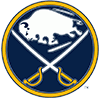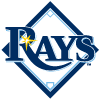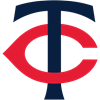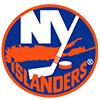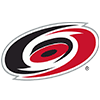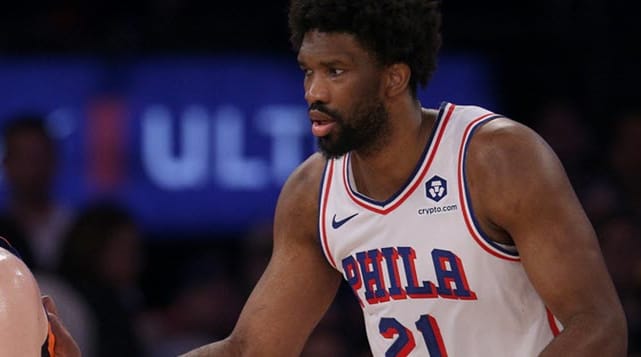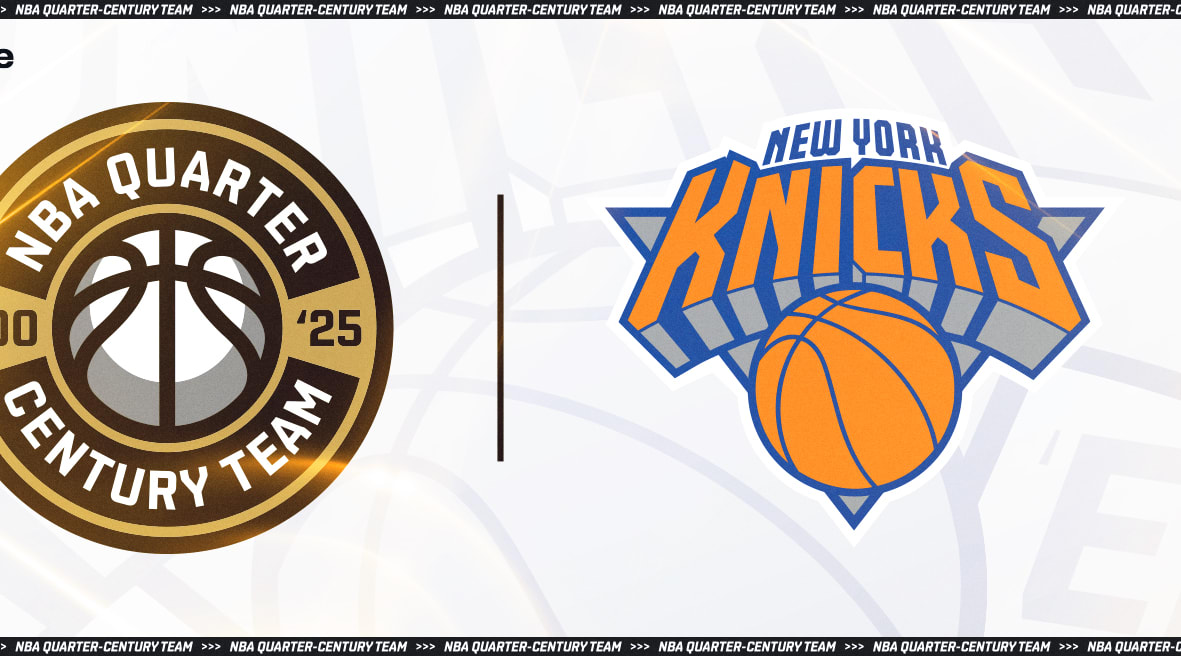Part 1: Is It Safe To Trust The Kids?
Seven years ago, at the behest of my Trinidadian friend Troy, I joined a 12-team fantasy basketball league that I imagine to be eerily similar to ones across the nation, with one delightful exception: except for two other American interlopers, the league is entirely populated by a combination of Troy's relatives, friends, and acquaintances who were born on various islands in the Caribbean. I mention this because, with diverse backgrounds come diverse perspectives. So unsurprisingly, while Troy and I agree on most subjects, one particular American institution represents a perpetual bone of contention: college basketball.
The debate over college basketball's so-called "One-and-Done Rule" has been a heated one, and the recent season-ending injury to the University of Kentucky's Nerlens Noel, the presumptive number one overall pick in June's NBA Draft prior to his injury, has given opponents of the Rule new ammunition. The Rule itself is simple. Implemented starting with the 2006 NBA Draft, to be eligible to enter the Draft, a player must be 1) at least 19 years old and 2) at least one year out of high school. Essentially, the Rule compels high school graduates to spend a year either attending college or, in the trail that Milwaukee's Brandon Jennings blazed, playing ball internationally or in the NBA's Developmental League until they can meet the NBA's eligibility requirements.
This is where things begin to get complicated. Why was the Rule instituted in the first
Part 1: Is It Safe To Trust The Kids?
Seven years ago, at the behest of my Trinidadian friend Troy, I joined a 12-team fantasy basketball league that I imagine to be eerily similar to ones across the nation, with one delightful exception: except for two other American interlopers, the league is entirely populated by a combination of Troy's relatives, friends, and acquaintances who were born on various islands in the Caribbean. I mention this because, with diverse backgrounds come diverse perspectives. So unsurprisingly, while Troy and I agree on most subjects, one particular American institution represents a perpetual bone of contention: college basketball.
The debate over college basketball's so-called "One-and-Done Rule" has been a heated one, and the recent season-ending injury to the University of Kentucky's Nerlens Noel, the presumptive number one overall pick in June's NBA Draft prior to his injury, has given opponents of the Rule new ammunition. The Rule itself is simple. Implemented starting with the 2006 NBA Draft, to be eligible to enter the Draft, a player must be 1) at least 19 years old and 2) at least one year out of high school. Essentially, the Rule compels high school graduates to spend a year either attending college or, in the trail that Milwaukee's Brandon Jennings blazed, playing ball internationally or in the NBA's Developmental League until they can meet the NBA's eligibility requirements.
This is where things begin to get complicated. Why was the Rule instituted in the first place? Proponents of the Rule point to the numerous young players who were tricked into believing -- or tricked themselves -- that they were ready for the NBA straight out of high school. Many learned quickly, however, that the difference between high school basketball and the NBA is the difference between riding a bike with training wheels and trying to jump a motorbike over 15 parked cars Evel Kneivel-style.
According to the Rule's proponents, young players need this extra time to mature as people and as athletes. Plus, by attending college, players can arm themselves with a degree for life after basketball. Even if a player leaves school early, he is still more likely to return to obtain his degree than one who never attends college in the first place and declares for the Draft, forfeiting both his NCAA eligibility and the benefit of a free education.
Yet, for every Taj McDavid, Korleone Young, and Leon Smith (Who? Exactly), opponents of the One-and-Done Rule point to the numerous prep-to-pro success stories like Dwight Howard, Kobe Bryant, and LeBron James, trotted out as paragons of the "just let them play whenever they're ready" virtue. Opponents to the Rule also note that while players risk injury every time they step on the court, the Rule ensures that they cannot receive compensation from the NBA until a year out of high school. To ease these concerns, the NCAA created the Exceptional Student-Athletes Disability Insurance (ESDI) program, which allows student-athletes with a future in professional athletics the ability to insure against debilitating injury during their college careers. Unfortunately, the NCAA does no favors to elite student athletes by capping the potential disability compensation at $5 million. A 2013 NBA lottery pick -- like Noel -- will make multiples of that in his first guaranteed contract. Furthermore, the insurance is an all-or-nothing proposition, covering only a permanent injury that completely precludes an athlete from competing professionally in his sport. Thus, an athlete suffering an injury that lowers his draft slot and/or future earnings potential is simply out of luck.
Regardless of the attendant controversy, the One-and-Done Rule in its current form appears here to stay. In recent interviews, Commissioner David Stern has made it clear that the NBA will continue to implement its age restrictions. In fact, Stern has said that he thinks it would be even more beneficial to tack on another year, upping the age limit from 19 to 20 years old. The age limit was not modified by the new 10-year collective bargaining agreement ratified in December 2011, as owners and players deemed it a "B issue" during negotiations, one not worthy of delaying the end of the work stoppage to address, and discussions regarding the Rule's modification have been effectively tabled. And though many in the legal field argue that the age restriction is illegal, including arguments that the Rule violates antitrust laws as a restraint of trade, they face an uphill battle if they hope to have the Rule overturned. In 2004, Maurice Clarett challenged the NFL's more draconian eligibility restrictions, in which a player must be at least three years removed from high school to be eligible for the NFL Draft, in an attempt to enter the 2004 NFL Draft after his freshman year, prior to what the rules generally permitted. The United States Court of Appeals for the Second District, however, dismissed Clarett's arguments. The NFL age limit, which was collectively bargained for by the players' union and the league's owners, was upheld based on labor law precedent holding that current union members may impose limits on future members. The NBA's One-and-Done Rule, if challenged, would likely be upheld for similar reasons.
Now, as I stated before, I've often debated the merits of the One-and-Done Rule with my aforementioned friend from the Caribbean. See, in Trinidad, after soccer, the NBA is king (Ok, in truth, it is actually third behind something called cricket, which is a mutant form of baseball in which "matches" can last for days, or even weeks. As sad as it can be to root for my beloved Cubs, I'll stick with the American version. But, I digress). Given both his cultural background and his attendance of basketball ne'er-do-well James Madison University for his undergraduate studies, Troy reacts to having to wait a year to watch teenage basketball prodigies compete on sport's grandest stage just like Canadians would if forced to wait a year for Justin Bieber to perform in concert so that he could attend music school. Simply put, Troy sees no value in forcing phenoms to waste away in basketball purgatory for a year.
On the other hand, I, like many other sports fans, had the pleasure of worshipping at the altar of big-time college basketball due to my tenure at the University of Wisconsin, a school with a rabid fan base (shout out to the Grateful Red) but about as likely to have a one-and-done player as Megan Fox is to win an Oscar. Having been thusly indoctrinated, I would consider it a crime to deprive college basketball of such talents, having seen firsthand the beauty of allowing transcendent talent to flower in a sort of nationally-observed incubator -- a stage where the vagaries of amateurism still protect the athletes from undue criticism, yet provide a spellbound and immense audience for their arrival on the national scene.
As I sat fleshing out both sides of this issue with Troy, I realized that, to borrow a phrase from family law, it's about the "best interests of the kids." It's not about whether Troy or I was right about the entertainment value of holding kids hostage in college versus throwing them to the wolves in the NBA. In this case, we'll look at their interests narrowly, in the same way they view it -- what is the best policy for their careers? Are players better, in the short term, after a year of college seasoning? Or is the time wasted adapting their games to a different style of play and set of rules against mediocre competition?
This question is far from academic for fantasy owners -- it is essential. Better players mean better stats for our teams. And we all know what better stats for our teams produce. So, what does the data tell us? Is it safer to draft "one-and-done" rookies for your team than it would have been to draft a high schooler prior to the arrival of the One-and-Done Rule? Amidst all the juicy and often contradictory narratives revolving around the One-and-Done Rule, what does the data actually tell us about the performance of rookies straight from high school versus those with a year in the college game? Can you count on a rookie for the crucial stretch run that will define your team's success?
To analyze these questions, I compared the rookie year stats of two sets of players: those players drafted in the first round from 1999 to 2005 that entered the league directly out of high school vs. those players drafted in the first round from 2006 to 2012 that attended one year of college before entering the league.* There have been six draft classes since the One-and-Done Rule was incorporated in 2006 so I similarly only reviewed the statistics of those high school drafted in the six years leading up to the Rule. This provided some nice symmetry, and incorporates a time frame that is more relevant for our purposes given that fantasy basketball is a more recent phenomenon than either fantasy football or baseball, but leaves out a few of the aging prep-to-pro ballers including Garnett and Bryant. One other potential research bias that must be noted before we proceed is that this analysis did not take into account either high school stars who opted for college despite their potential to be drafted in the first round prior to the One-and-Done Rule (i.e. Rivals 2002 #1 high school senior Carmelo Anthony, who chose to play a year at Syracuse before jumping to the NBA) or those high school seniors who likely would have jumped straight to the pros if possible after 2006 but ended up staying in school for longer than one year for a number of reasons, including failing to immediately live up to their considerable hype (i.e. Rivals 2009 #4 high school senior John Henson, who underwhelmed in his first two seasons at UNC before being drafted 14th overall in the 2012 NBA Draft). Without further ado, let's dive in.**
| Player | Dft. Pos. | NBA Rookie Team | School | Mins | Pts | FG% | FT% | Ast | Reb | Stl | Blk | TO |
2012
| Anthony Davis | 1 | NOH | Kent. | 27.8 | 12.5 | 0.514 | 0.702 | 0.9 | 7.5 | 1.2 | 1.9 | 1.5 |
| Michael Kidd Gilchrist | 2 | CHA | Kent. | 25.9 | 9.1 | 0.455 | 0.764 | 1.5 | 5.7 | 0.8 | 1.0 | 1.4 |
| Bradley Beal | 3 | WAS | Fla. | 31.0 | 13.2 | 0.393 | 0.793 | 2.5 | 3.3 | 0.9 | 0.5 | 1.5 |
| Andre Drummond | 9 | DET | Conn. | 19.7 | 7.3 | 0.592 | 0.365 | 0.5 | 7.5 | 0.9 | 1.7 | 0.8 |
| Austin Rivers | 10 | NOH | Duke | 23.3 | 6.0 | 0.350 | 0.557 | 2.2 | 1.8 | 0.5 | 0.5 | 1.3 |
| Maurice Harkless | 15 | ORL | St. Johns | 19.6 | 4.8 | 0.457 | 0.571 | 0.6 | 3.8 | 0.8 | 0.8 | 0.6 |
| Tony Wroten | 25 | MEM | Wash. | 8.8 | 3.4 | 0.357 | 0.800 | 1.5 | 1.2 | 0.4 | 0.2 | 0.8 |
| Marquis Teague | 29 | CHI | Kent. | 7.2 | 1.9 | 0.391 | 0.600 | 1.2 | 0.6 | 0.2 | 0.1 | 0.6 |
2011
| Kyrie Irving | 1 | CLE | Duke | 30.5 | 18.5 | 0.469 | 0.872 | 5.4 | 3.7 | 1.1 | 0.4 | 3.1 |
| Enes Kanter | 3 | UTAH | Ken. | 13.2 | 4.6 | 0.496 | 0.667 | 0.1 | 4.2 | 0.3 | 0.3 | 0.8 |
| Tristan Thompson | 4 | CLE | Texas | 23.7 | 8.2 | 0.439 | 0.552 | 0.5 | 6.5 | 0.5 | 1.0 | 1.4 |
| Brandon Knight | 8 | DET | Kent. | 32.3 | 12.8 | 0.415 | 0.759 | 3.8 | 3.2 | 0.7 | 0.2 | 2.6 |
| Tobias Harris | 19 | MKE | Tenn. | 11.4 | 5.0 | 0.467 | 0.815 | 0.5 | 2.4 | 0.3 | 0.2 | 0.7 |
| Cory Joseph | 29 | SAS | Texas | 9.2 | 2.0 | 0.314 | 0.647 | 1.2 | 0.9 | 0.2 | 0.1 | 0.4 |
2010
| John Wall | 1 | WAS | Kent. | 37.8 | 16.4 | 0.409 | 0.766 | 8.3 | 4.6 | 1.8 | 0.5 | 3.8 |
| Derrick Favors | 3 | NJ | Ga. Tech | 19.5 | 6.3 | 0.511 | 0.612 | 0.4 | 5.3 | 0.3 | 0.7 | 1.0 |
| � | � | UTAH | � | 20.2 | 8.2 | 0.529 | 0.561 | 0.8 | 5.2 | 0.5 | 1.2 | 1.0 |
| DeMarcus Cousins | 5 | SAC | Kent. | 28.5 | 14.1 | 0.430 | 0.687 | 2.5 | 8.6 | 1.0 | 0.8 | 3.3 |
| Xavier Henry | 12 | MEM | Kansas | 13.9 | 4.3 | 0.406 | 0.635 | 0.5 | 1.0 | 0.3 | 0.1 | 0.3 |
| Eric Bledsoe | 18 | LAC | Kent. | 22.7 | 6.7 | 0.424 | 0.744 | 3.6 | 2.8 | 1.1 | 0.3 | 2.4 |
| Avery Bradley | 19 | BOS | Texas | 5.2 | 1.7 | 0.343 | 0.5 | 0.4 | 0.5 | 0.3 | 0 | 0.5 |
| Daniel Orton | 29 | ORL | Kent. | 11.7 | 2.8 | 0.567 | 0.440 | 0.3 | 2.4 | 0.5 | 0.6 | 0.4 |
2009
| Tyreke Evans | 4 | SAC | Memphis | 37.2 | 20.1 | 0.458 | 0.748 | 5.8 | 5.3 | 1.5 | 0.4 | 3.0 |
| DeMar DeRozan | 9 | TOR | So. Cal. | 21.6 | 8.6 | 0.498 | 0.763 | 0.7 | 2.9 | 0.6 | 0.2 | 0.8 |
| Brandon Jennings | 10 | MIL | Italy | 32.6 | 15.5 | 0.371 | 0.817 | 5.7 | 3.4 | 1.3 | 0.2 | 2.4 |
| Jrue Holiday | 17 | PHI | UCLA | 24.2 | 8.0 | 0.442 | 0.756 | 3.8 | 2.6 | 1.1 | 0.2 | 2.1 |
| Byron Mullens | 24 | OKC | Oh. St. | 4.2 | 1.1 | 0.368 | 0 | 0.1 | 0.8 | 0.2 | 0 | 0.3 |
2008
| Derrick Rose | 1 | CHI | Memphis | 37 | 16.8 | 0.475 | 0.788 | 6.3 | 3.9 | 0.8 | 0.2 | 2.5 |
| Michael Beasley | 2 | MIA | Kans. St. | 24.8 | 13.9 | 0.472 | 0.772 | 1.0 | 5.4 | 0.5 | 0.5 | 1.5 |
| OJ Mayo | 3 | MEM | USC | 38.0 | 18.5 | 0.438 | 0.879 | 3.2 | 3.8 | 1.1 | 0.2 | 2.8 |
| Kevin Love | 5 | MIN | UCLA | 25.3 | 11.1 | 0.459 | 0.789 | 1.0 | 9.1 | 0.4 | 0.6 | 1.5 |
| Eric Gordon | 7 | LAC | Indiana | 34.3 | 16.1 | 0.456 | 0.854 | 2.8 | 1.0 | 2.1 | 0.4 | 2.1 |
| Jerryd Bayless | 11 | POR | Arizona | 12.4 | 4.3 | 0.365 | 0.806 | 1.5 | 1.1 | 0.3 | 0 | 1.1 |
| Anthony Randolph | 14 | GS | LSU | 17.9 | 7.9 | 0.462 | 0.716 | 0.8 | 5.8 | 0.7 | 1.2 | 1.3 |
| JJ Hickson | 19 | CLE | N. Car. State | 11.4 | 4.0 | 0.515 | 0.672 | 0.1 | 2.7 | 0.2 | 0.5 | 0.7 |
| Kosta Koufos | 24 | UTAH | OSU | 11.8 | 4.7 | 0.508 | 0.706 | 0.4 | 2.9 | 0.3 | 0.6 | 0.5 |
| Donte Green | 28 | SAC | Syracuse | 13.2 | 3.8 | 0.326 | 0.853 | 0.5 | 1.6 | 0.3 | 0.2 | 0.7 |
2007
| Greg Oden | 1 | POR | Oh. St. | 21.5 | 8.9 | 0.564 | 0.637 | 0.5 | 7.0 | 0.4 | 1.1 | 1.4 |
| Kevin Durant | 2 | SEA/OKC | Texas | 34.6 | 20.3 | 0.430 | 0.873 | 2.4 | 4.4 | 1.0 | 0.9 | 2.9 |
| Mike Conley Jr | 4 | MEM | Oh. St. | 26.1 | 9.4 | 0.428 | 0.732 | 4.2 | 2.6 | 0.8 | 0 | 1.7 |
| Brandon Wright | 8 | GS | N. Car. | 9.9 | 4.0 | 0.554 | 0.675 | 0.2 | 2.6 | 0.2 | 0.6 | 0.3 |
| Spencer Hawes | 10 | SAC | Wash. | 13.1 | 4.7 | 0.459 | 0.655 | 0.6 | 3.2 | 0.2 | 0.6 | 0.8 |
| Thaddeus Young | 12 | PHI | Ga. Tech | 21.0 | 8.2 | 0.539 | 0.738 | 0.8 | 4.2 | 1.0 | 0.1 | 0.9 |
| Javaris Crittenton | 19 | LAL | Ga. Tech | 7.8 | 3.3 | 0.491 | 0.679 | 0.8 | 1.0 | 0.3 | 0 | 1.0 |
| Daequan Cook | 21 | MIA | Oh. St. | 24.4 | 8.8 | 0.381 | 0.825 | 1.3 | 3.0 | 0.4 | 0.2 | 1.1 |
2006
| Tyrus Thomas | 4 | CHI | LSU | 13.4 | 5.2 | 0.475 | 0.606 | 0.6 | 3.7 | 0.6 | 1.1 | 1.3 |
| Shawne Williams | 17 | IND | Memphis | 12.1 | 3.9 | 0.469 | 0.550 | 0.5 | 1.8 | 0.1 | 0.2 | 0.5 |
2005
| Martell Webster | 6 | Portland | HS Sr | 17.5 | 6.6 | 0.399 | 0.859 | 0.6 | 2.1 | 0.3 | 0.2 | 0.7 |
| Andrew Bynum | 10 | LAL | HS Sr | 7.3 | 1.6 | 0.402 | 0.296 | 0.2 | 1.7 | 0.1 | 0.5 | 0.4 |
| Gerald Green | 18 | Boston | HS Sr | 11.7 | 5.2 | 0.478 | 0.784 | 0.6 | 1.3 | 0.4 | 0.1 | 0.7 |
2004
| Dwight Howard | 1 | ORL | HS Sr | 32.6 | 12.0 | 0.520 | 0.671 | 0.9 | 10.0 | 0.9 | 1.7 | 2.0 |
| Shaun Livingston | 4 | LAC | HS Sr | 27.1 | 7.4 | 0.414 | 0.746 | 5.0 | 3.0 | 1.1 | 0.4 | 2.5 |
| Robert Swift | 12 | SEA | HS Sr | 4.5 | 0.9 | 0.455 | 0.556 | 0.1 | 0.3 | 0.1 | 0.4 | 0.3 |
| Sebastian Telfair | 13 | POR | HS Sr | 19.6 | 6.8 | 0.393 | 0.789 | 3.3 | 1.5 | 0.5 | 0.1 | 1.8 |
| Al Jefferson | 15 | BOS | HS Sr | 14.8 | 6.7 | 0.528 | 0.630 | 0.3 | 4.4 | 0.3 | 0.8 | 0.9 |
| Josh Smith | 17 | ATL | HS Sr | 27.7 | 9.7 | 0.455 | 0.688 | 1.7 | 6.2 | 0.8 | 1.9 | 1.8 |
| JR Smith | 18 | NOH | HS Sr | 24.5 | 10.3 | 0.394 | 0.689 | 1.9 | 2.0 | 0.7 | 0.1 | 1.4 |
| Dorell Wright | 19 | MIA | HS Sr | 9.0 | 2.3 | 0.273 | 1.000 | 1.0 | 0.3 | 1.3 | 0 | 1.0 |
2003
| LeBron James | 1 | CLE | HS Sr | 39.5 | 20.9 | 0.417 | 0.754 | 5.9 | 5.5 | 1.6 | 0.7 | 3.5 |
| Travis Outlaw | 23 | POR | HS Sr | 2.4 | 1.0 | 0.429 | 0.500 | 0.1 | 0.5 | 0.1 | 0 | 0.1 |
| Ndudi Ebi | 26 | MIN | HS Sr | 1.9 | 0.8 | 0.429 | 0.250 | 0.2 | 0.2 | 0 | 0.2 | 0.2 |
| Kendrick Perkins | 27 | BOS | HS Sr | 3.5 | 2.2 | 0.533 | 0.667 | 0.3 | 1.4 | 0 | 0.2 | 0.5 |
2002
| Amar'e Stoudemire | 9 | PHX | HS Sr | 31.3 | 13.5 | 0.472 | 0.661 | 1.0 | 8.8 | 0.8 | 1.1 | 2.3 |
2001
| Kwame Brown | 1 | WSH | HS Sr | 14.3 | 4.5 | 0.387 | 0.707 | 0.8 | 0.35 | 0.3 | 0.5 | 0.8 |
| Tyson Chandler | 2 | CHI | HS Sr | 19.6 | 6.1 | 0.497 | 0.604 | 0.8 | 4.8 | 0.4 | 1.3 | 1.4 |
| Eddy Curry | 4 | LAC | HS Sr | 16.0 | 6.7 | 0.501 | 0.656 | 0.3 | 3.8 | 0.2 | 0.7 | 1.0 |
2000
| Darius Miles | 3 | LAC | HS Sr | 26.3 | 9.4 | 0.505 | 0.521 | 1.2 | 5.9 | 0.6 | 1.5 | 1.8 |
| DeShawn Stevenson | 23 | UTAH | HS Sr | 7.3 | 2.2 | 0.341 | 0.684 | 0.5 | 0.7 | 0.3 | 0.1 | 0.7 |
1999
| Jonathan Bender | 5 | TOR | HS Sr | 5.4 | 2.7 | 0.329 | 0.667 | 0.1 | 0.9 | 0 | 0.2 | 0.3 |
| Leon Smith | 29 | SAS | HS Sr | 7.1 | 2.2 | 0.385 | 0.647 | 0.2 | 2.2 | 0.3 | 0.1 | 0.2 |
The first thing that jumps out at me is that players were frequently drafted in the first round after a single year of college ball. This trend can be attributed to a number of factors, including the proclivity of current general managers to draft younger players with the ever-elusive "upside" that could turn them into stars. This inclination results in a natural skepticism towards players who have been in college for multiple seasons, leading to a vicious cycle in which many players jump at their initial chance to enter the draft in order to maximize their draft potential even if they're not necessarily ready.
However, there may be another reason why one-and-done players are being drafted in the first round at a higher clip than their high school brethren of the pre-age limit era: they're simply better prepared. Take the point guard duo of Shaun Livingston and Sebastian Telfair, Rivals' 4th and 6th ranked players in the class of 2004, respectively. Both entered the league straight out of high school with considerable hype. Yet, with the NBA point guard position having a notoriously long learning curve, both Telfair and Livingston struggled mightily as rookies in most facets of the game, despite each earning fairly significant amounts of burn. Compare their struggles to Brandon Knight, Rivals' 6th ranked player in the class of 2011. A few years prior, Knight may have taken his talents straight to the pros, exposing his slight build to the brutal day-to-day rigors of battling against grown men. Instead, the rules protected Knight from himself (and his handlers), providing him with a year of seasoning (and importantly, advanced weight training) at the University of Kentucky, including multiple, high-intensity NCAA Tournament games in which he led the Wildcats to the Final Four. The following year, Knight was drafted with the eighth overall pick of the 2012 NBA Draft and immediately saw significant playing time with the Detroit Pistons, despite the presence of incumbent point guard Rodney Stuckey, and posting solid across the board stats in big minutes. And these minutes were not empty either; Knight posted solid numbers across the board for fantasy owners.
While the situation a player lands in is arguably just as important as a player's age and experience (in Knight's case, the Pistons made it well known their intent to move Stuckey to shooting guard), the aggregate numbers still speak to the importance of an additional year of growth after high school, particularly as it pertains to a savvy fantasy owner looking to add a solid rookie in the mid to late rounds. If we limit our analysis solely to players chosen in the top half of the first round of the draft*** (with the implicit assumption that those picked outside the top half are unlikely to contribute to the contending teams that pick in that range, and therefore, are much more likely to be irrelevant for fantasy purposes), the numbers are stark in comparison.
| Players | Minutes | Points | FG% | FT% | Assists | Rebounds | Steals | Blocks | Turnovers |
| 2006-2012 | 25.2 | 10.9 | 0.462 | 0.708 | 1.9 | 4.4 | 0.8 | 0.6 | 1.6 |
| 1999-2005 | 19.7 | 7.6 | 0.444 | 0.652 | 1.5 | 3.8 | 0.5 | 0.7 | 1.4 |
The players who played a year in college following high school rather than jumping straight to the pros performed better in nearly every single category, including significantly better in points and percentages. The driving factor behind this is a large gap in minutes. While it is difficult to produce fantasy-relevant statistics in 20 minutes per game, players earning upwards of 25 minutes per game firmly plant themselves on the fantasy radar. With an additional year of experience and growth under their belt, the crop of one-and-dones are generally better prepared to quickly adjust to the speed and talent of the NBA and are thus granted substantial minutes in their rookie seasons. With the top three picks of the 2012 Draft already playing considerable minutes in their rookie seasons, this trend seems likely to continue.
So what does this do for you this year? With your league's fantasy draft now reduced to a fond memory, the waiver wire and trade tables are where you can put this knowledge to use. The stats above portray that, in general, players with a year of collegiate experience under their belt are more likely to succeed in their rookie seasons than those in the past who lacked it. As the season wears on, rookies who early in the season encountered a crowded rotation or were blocked by veterans may be ready to have their time in the sun. The opportunity is magnified by the inevitable roster shuffling that perennially accompanies the NBA trade deadline. Non-contending teams will be willing to hand the reins to their younger studs, while contenders will need fresh legs for their frantic playoff pushes. Maurice Harkless, Bradley Beal, and Austin Rivers are at the top of a group of rookies that are not owned in a majority of leagues but have shown that they can be productive and thus should be on the radar of savvy fantasy owners.
* Brandon Jennings is lumped in the group of players having attended a year of college even though he spent one after high school playing for Lottomatica Roma in Italy instead of attending college.
** Special thanks to my lovely wife, Sarah, for doing the relevant research
***I defined the "top half of the first round of the draft" to include all players drafted with the first 15 picks, even though the NBA did not add a 30th team until 2004 (the Charlotte Bobcats). This invariably left out some cusp draft picks on both sides of the ledger, including Eric Bledsoe, Jrue Holiday, Josh Smith and JR Smith, but the line had to be drawn somewhere.
Justin Fielkow is an attorney at the Franklin Law Group in Northfield, Illinois, a Chicago suburb. Justin attended Tulane University Law School and obtained a Certificate in Sports Law. He has been writing for Rotowire since 2008, first while at the University of Wisconsin, then and still as the beat writer for the New Orleans Saints, and now as a featured columnist providing insight twice a month into the legal side of sport with a fantasy spin.










